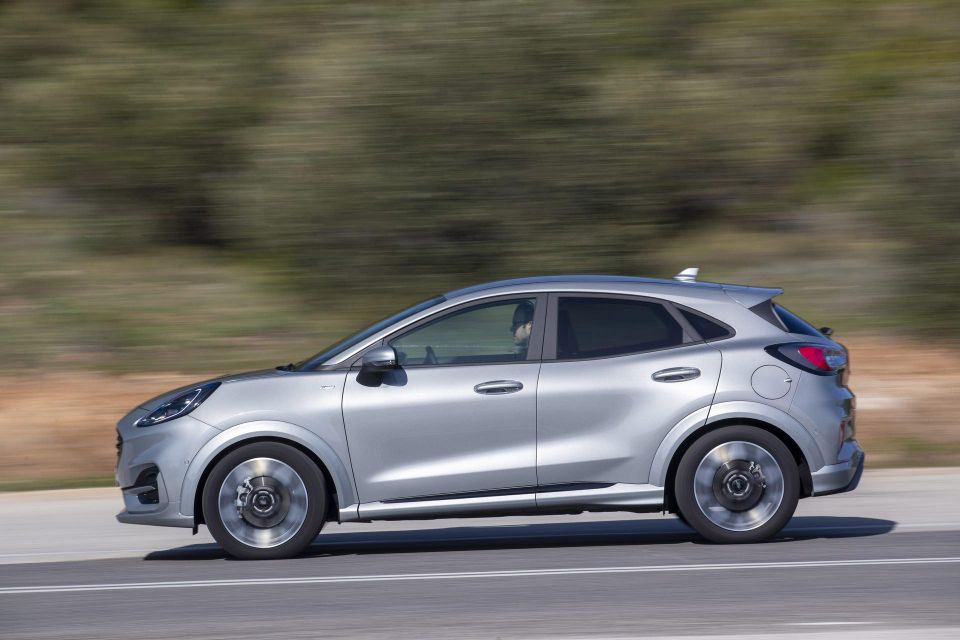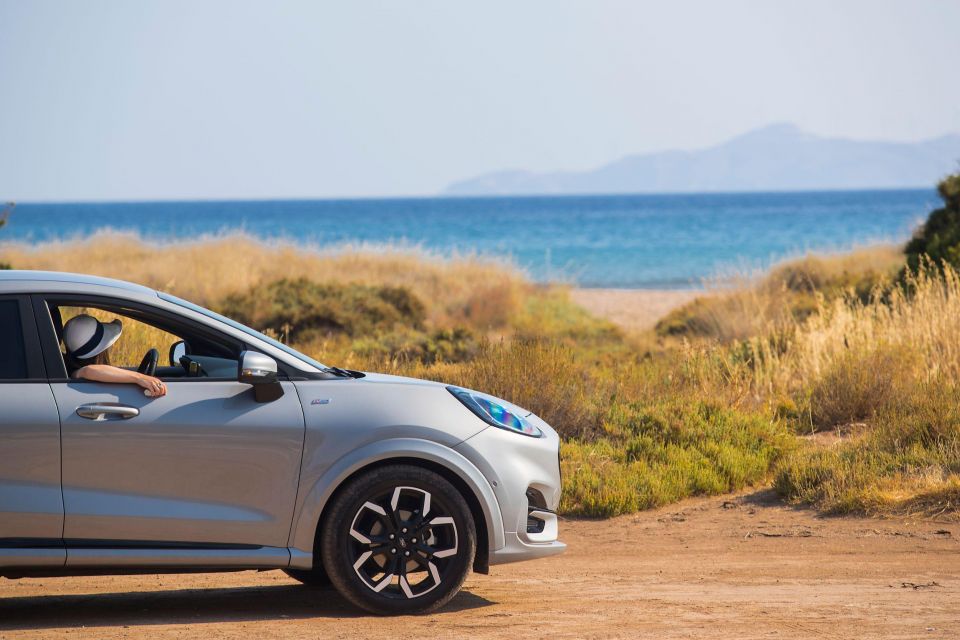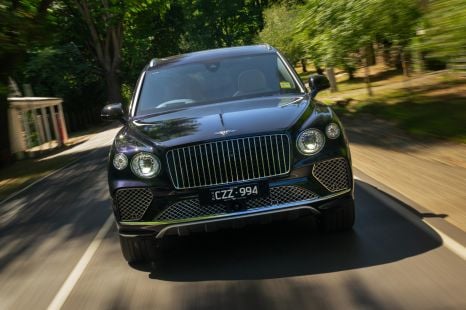

William Stopford
2025 Suzuki Swift Plus review
5 Days Ago
Ford’s latest entrant in the compact SUV class brings a new level of sportiness to rival the likes of the Volkswagen T-Cross and Mazda CX-3.



Design Contributor
New from
$29,990
excl. on-roads

Design Contributor
New from
$29,990
excl. on-roads


Design Contributor
New from
$29,990
excl. on-roads

Design Contributor
New from
$29,990
excl. on-roads
Quickly see how this car stacks up against its competition. Select any benchmark to see more details.
Where expert car reviews meet expert car buying – CarExpert gives you trusted advice, personalised service and real savings on your next new car.
The B-SUV Segment is gradually becoming one of the most popular – and competitive – segments in Europe, where most automakers have already joined the trend.
Ford has been offering the EcoSport since 2012, but it’s officials had bigger plans in order to grasp a greater portion of the pie. Those materialised in 2019 with the unveiling of the all-new Ford Puma, signalling the return of a popular nameplate in an unexpected manner.

The first generation Ford Puma sold between 1997 and 2001 was an affordable two-door coupe based on the Fiesta platform. The market has drastically changed since, along with customer preferences, so the product planning department following customer feedback decided that the second generation should take the form of a Fiesta-based crossover.
Despite the relatively high ground clearance (164-166mm) and five-door body, the Puma incorporates plenty of its predecessor’s youthful character.
Looks are subjective but the muscular body with coupe-style elements like the LED headlights sitting on the front fenders, the toned wheel arches, the rear shoulders toward the aggressive LED tail lights, the sculpted profile, the sporty roofline and the heavily inclined rear windshield covered by a large spoiler, create an almost exotic look.

This is more evident in ST-Line guise, thanks to the bodykit comprising of a sporty front bumper with a different grille and larger air intakes, body coloured fender, side sill and rear bumper extensions along with new wheels (up to 18 inches in diameter).
The platform is derived from the Fiesta, however various modifications resulted in considerably larger dimensions compared to the supermini. The footprint is typical of a small SUV, measuring 4186mm long, 1805mm wide and 1537mm tall, with a wheelbase of 2446mm.
According to Ford Australia, kerb weight is 1359kg but the one we tested (EU) was rated at 1280kg. Suspension features stiffer twist-beam rear suspension, larger shock absorbers and stiffer bushes in order to support its new role.

Ford Australia announced three equipment levels for the Ford Puma, due to hit Australian showrooms during the latter part of September 2020.
The basic Puma starts at $29,990, the Puma ST-Line costs $32,340 while the flagship Puma ST-Line V starts from $35,540 (all prices excluding on-road costs).
This week, Ford Australia announced national drive-away pricing for the Puma line-up, starting at $31,990 for the Puma FWD, $33,990 for the ST-Line and $36,990 for the ST-Line V.
All share the same 1.0-litre engine, seven-speed dual-clutch automatic transmission, front-wheel drive, and five selectable driving modes – the mild-hybrid and diesel versions available overseas won’t make it Down Under, at least from launch.
Depending on the version, the colour palette includes eleven exterior colours ($650 for prestige finishes) – some of them available with an optional black-painted roof ($500).
MORE: 2020 Ford Puma pricing and specs



The base Ford Puma comes with 17-inch alloy wheels, LED headlights, daytime running lights and tail lights, rear parking sensors, a rear-view camera, heated adjustable and power folding exterior mirrors, leather-wrapped steering wheel, cloth seats with massage function, LED ambient lighting, and automatic climate control.
The Sync 3 infotainment system features a standard 8.0-inch touch screen and supports Apple CarPlay, Android Auto, DAB+/AM/FM radio, Bluetooth, satellite navigation and voice commands, while it comes equipped with a seven-speaker audio system, two USB ports and wireless smartphone charging.
The ST-Line and ST-Line V come equipped with the different bodykit described above, heavier bolstered sports seats (quilted Windsor leather-accented on the ST-Line V) and a 12.3-inch digital instrument cluster.
ST-Line V models exclusively get the premium B&O Play sound system with ten speakers and a subwoofer. A powered panoramic sunroof is optional in all trim levels ($2000).

The Ford Puma was tested by Euro NCAP in 2019, achieving a five-star safety rating. It scored a 94 per cent adult occupant rating, 84 per cent child occupant rating, 77 per cent vulnerable road user rating and 74 per cent safety assist rating.
Utilising 12 ultrasonic sensors, three radars and two cameras, the standard safety kit includes autonomous emergency braking (AEB) with pedestrian and cyclist detection, emergency brake assist, forward collision alert, hill hold assist, lane keeping aid with lane departure warning, traffic sign recognition, driver impairment monitor, tyre pressure monitoring, seatbelt reminders for both rows, rear parking sensors, and a rear-view camera
There’s also automatic LED headlights with auto high-beam, auto wipers, ABS, ESP, and traction control. Every Puma comes fitted with six airbags and two ISOFIX child seat anchorage points at the rear.
Additionally, there is the optional Park Pack ($1500) for all variants, which includes adaptive cruise control with stop&go function, evasive steer assistance and lane centring, Active Park Assist, front and side parking sensors, as well as the very useful blind-spot information system.

Getting inside the Puma for the first time feels like a familiar experience for those who have driven the Fiesta. The dashboard is almost identical, however there is a lot more space available both at the front and rear thanks to the enlarged exterior dimensions and the added height providing easier ingress/egress.
The perceived quality is good with soft-touch plastics on the upper part of the dashboard, carbon-fibre style inserts, nice sport seats and leather-wrapped flat-bottom steering wheel with Race Red stitching (ST-Line V), however the Fiesta-derived door inserts look a bit dated and could use a grab handle.
As for technology, the fully-digital 12.3-inch instrument cluster that greets you with the Puma emblem and changes colours depending on the selected driving mode looks great but could have more configurable options (like navigation etc).



The 8.0-inch touchscreen sitting atop of the centre stack running Sync 3 infotainment is pretty easy to use and fast-responding with all of the modern smartphone integration options – just like in the Fiesta ST.
Passengers have access to a mobile WiFi hotspot (up to 10 devices) thanks to the FordPass Connect on-board modem which also gives remote access to the lock/unlock and start functions and vehicle location/status, though the WiFi hotspot function won’t be available on Australian models.
Despite the sporty roofline, the second row has enough room to accommodate two adult passengers – I am 184cm tall and can fit behind a driver of the same height during a short trip, with modest kneeroom and headroom.
Having said that, the Puma is less accomodating compared to the Skoda Kamiq and Renault Captur, and doesn’t have rear air vents like its aforementioned competitors. Otherwise, it does the job with little compromise. Rear visibility could be better but the standard rear-view camera and rear parking sensors help when reversing into tight spots.




In-cabin storage is average with medium-sized door inserts and glovebox, a small storage compartment underneath the central armrest, two cup holders, a wireless charging pad in the base of the central console and a special place for you to place the key next to the physical handbrake.
The boot is fairly large with 402 litres of storage for the mild-hybrid versions and up to 456 litres for the non-hybrid in the European market. The opening is large, the shape is very practical, and the rear seats can fold flat (60:40).
The most surprising feature though is the waterproof MegaBox compartment that is hidden underneath the adjustable boot floor, offering an additional 80 litres of storage while featuring a drainage plug for easy cleaning.
This feature is designed for people with an active lifestyle, who would like to store their wet clothes, swimming suits, muddy boots or any kind of equipment, while keeping the cabin sparkling clean (the removable and washable seat covers in specific trim levels also help with that).

It is also useful for transporting long items like a golf-bag which can fit upwards inside the boot. We tried using MegaBox as our personal minibar, adding ice, fresh fruits and soft drinks – and it worked!
Unfortunately, the MegaBox won’t be available in Australia, with the local arm opting for a space-saver spare wheel instead (Euro models don’t have this option). However, it will still have an underfloor storage compartment measuring 34 litres, contributing to a total of 410 litres of luggage space.
The ST-Line V also comes with a hands-free electric tailgate which is optional on the Puma and ST-Line trim levels ($750).

The Ford Puma we tested was powered by the 1.0-litre EcoBoost Hybrid engine producing 114kW of power at 6000rpm and 190Nm of torque (or up to 240Nm with overboost) at 2500rpm. The engine is mated to a six-speed manual transmission that sends the power to the front wheels, and is currently the most powerful and sportiest version of the car until the flagship Puma ST arrives in September.
The mild hybrid system consists of a 11.5kW belt-driven integrated starter/generator (BIGS) enabling energy recovery during braking and coasting in order to charge the 48V lithium-ion air-cooled battery.
When needed, the BIGS acts as an electric motor, adding up to 50Nm of torque and improving fuel efficiency by up to 9 per cent. It also helps with the auto start/stop system, enabling greater use and ultra-fast response (the engine restarts in approximately 300 milliseconds).

As a result, the Puma MHEV consumes an average of 5.6-5.7L/100km of fuel in a combined cycle and emits 127-135g/km of CO2 (WLTP). At the same time, performance is respectable with a 0-100 km/h acceleration time of 9.0 seconds and a top speed of 200km/h.
In Australia, the Ford Puma will be exclusively offered with the non-hybrid 1.0-litre EcoBoost three-cylinder turbocharged petrol producing 92kW of power at 6000rpm and 170Nm of torque from 1500 to 4500rpm, mated to a seven-speed dual-clutch transmission. This engine includes high-pressure direct fuel injection, twin-independent variable cam timing and fuel-saving cylinder deactivation.
Besides the petrol powertrains, in Europe there is also a diesel Puma with the 1.5-litre EcoBlue engine producing 88kW of power and 285Nm of torque.

From the moment you push the start button and start driving, you immediately recognise the work Ford engineers have put in the development of the Puma, with the Fiesta platform serving as a great starting point.
The Ford Puma has exceptional sound insulation and travels quietly on the highway, while the ride is on par with vehicles from larger segments. As a typical Ford, the Puma is by far the sportiest B-SUV on the market, thanks to the quick steering, surprisingly sporty suspension setting (especially on the ST-Line) and the almost non-existent body-roll.
This is evident on bumpy roads without being too firm for daily use, however it also gives it an advantage on fast-paced driving on twisty roads. Having said that, the base Puma (Titanium in Europe) is still very capable and does a better job in absorbing imperfections on the road.
When pushed, the Puma ST-Line shows it can be surprisingly fun, agile, and composed with exceptional handling for its segment. While it’s no Fiesta ST (the upcoming Puma ST will be closer to that) due to the added weight and height, the small SUV feels like a proper warm hatchback around corners.
You sit higher than the Fiesta but low enough to feel like you’re part of the car. The steering is light but it gives you enough confidence and information to place the car where you want inside the corner. Brakes are quite strong with a sporty pedal feel and the manual gearbox is precise with the right amount of travel between gears.
The 1.0-litre Ford EcoBoost Hybrid with 114kW feels like an engine with much larger displacement and provides the car with enough grunt to be considered pretty quick. The only downside is the slightly rough sound of its three-cylinders (although in Sport mode it is virtually enhanced) that can be heard inside the cabin only when you approach the rev limiter.
As for performance from standstill (0-100 km/h in 9.0 seconds) and in-gear acceleration, the Puma is among the fastest vehicles of its segment with similar amounts of power. Thanks to the shorter-ratio six-speed manual transmission and the instant torque, this can be felt in a wider rev range.

Where expert car reviews meet expert car buying – CarExpert gives you trusted advice, personalised service and real savings on your next new car.
The mild-hybrid system quietly supports the petrol engine minimising turbo-lag and offering a respectable 240Nm of torque in overboost mode. The only times you’ll actually feel like you’re driving an electrified vehicle is during coasting (energy recovery) and from the ultra-fast start-stop function–- when braking below 15 km/h, the engine turns off and automatically restarts when it is needed.
Thanks to this and the cylinder deactivation technology, the trip computer showed an average fuel consumption of around 7.0 litres per 100 km during our test with mixed driving (city, highway and fast-paced routes). A more laid-back driving style would lead to even better numbers.
Having driven the non-hybrid 1.0 EcoBoost with 92kW that will reach the Australian showrooms soon, the differences with its more powerful electrified sibling are noticeable at high revs, however it still offers a decent amount of power for the vehicle size and segment.
You can easily reach and comfortably maintain highway speeds carrying a full load of passengers and luggage, while the fuel consumption is pretty low – an average of around 6.0 litres per 100 km is easily achievable.

The Ford Puma comes with a five-year, unlimited-kilometre warranty.
Servicing occurs every 12 months or 15,000 km (whichever comes first) and costs $299 per service (including GST) for the first four years or 60.000 km of scheduled maintenance (a total of $1196).

The Ford Puma manages to stand out in a crowded segment, simply by being the sportiest and most fun-to-drive B-SUV on sale. If you enjoy spirited driving but also need the practical advantages of a high-riding vehicle, this is the way to go.
The exterior design might be polarising for some, but it definitely stands out combining sporty and premium looks with compact dimensions, while reflecting the youthful character of the car.
While the Puma offers average cabin space compared to some roomier rivals, the large boot (even without the clever MegaBox compartment) gives it extra points for practicality.

Despite its small displacement, the latest iteration of the multi-awarded 1.0-litre EcoBoost engine is a great fit for the Ford Puma – especially in its most powerful mild-hybrid derivative in combination with the sporty suspension and looks of the ST-Line.
We would love to have the 114kW engine available in Australia, but even the lesser non-hybrid version with 92kW offers a good compromise between power and fuel efficiency. If you want the best daily driver you should probably go for the base Puma FWD, while for top-spec performance you have to wait for the flagship Puma ST.
Overall, the Ford Puma earns a spot among the best B-SUVs alongside the Peugeot 2008 and the Renault Captur, each with its own unique characteristics.

Photography provided by Drive Magazine, shot by Thanasis Koutsogiannis
Where expert car reviews meet expert car buying – CarExpert gives you trusted advice, personalised service and real savings on your next new car.


William Stopford
5 Days Ago


Max Davies
4 Days Ago


Josh Nevett
3 Days Ago


Andrew Maclean
2 Days Ago


Shane O'Donoghue
2 Days Ago


William Stopford
22 Hours Ago